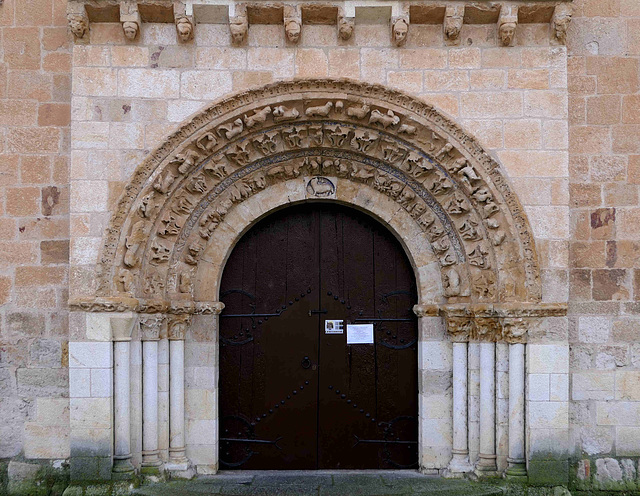Ávila - Basílica de San Vicente
Ávila - Basílica de San Vicente
Ávila - Basílica de San Vicente
Ávila - Basílica de San Vicente
Ávila - Basílica de San Vicente
Main Portal of the Barcelona Cathedral
Barcelona Cathedral
Ávila - San Andrés
Ávila - Catedral de Cristo Salvador
Ávila - Catedral de Cristo Salvador
Segovia - La Santísima Trinidad
Segovia - La Santísima Trinidad
Segovia - La Vera Cruz
Segovia - La Vera Cruz
Segovia - La Vera Cruz
Segovia - San Martín
Segovia - San Martín
Batalha - Mosteiro da Batalha
Batalha - Mosteiro da Batalha
Ourense - Catedral de Orense
Ourense - Catedral de Ourense
Ourense - Catedral de Ourense
Ourense - Catedral de Ourense
Vitoria-Gasteiz - Catedral de Santa María
Frose - St. Cyriakus
Gaillac - Saint-Pierre
Casbas de Huesca - Monasterio de Casbas
Altamura - Cattedrale di Santa Maria Assunta
Altamura - Cattedrale di Santa Maria Assunta
Altamura - Cattedrale di Santa Maria Assunta
Altamura - Cattedrale di Santa Maria Assunta
Altamura - Cattedrale di Santa Maria Assunta
Altamura - Cattedrale di Santa Maria Assunta
Matera - San Giovanni Battista
Lecce - Abbazia di Santa Maria di Cerrate
Lecce - Abbazia di Santa Maria di Cerrate
Conversano - Cattedrale di Conversano
Bari - Basilica di San Nicola
Bitetto - San Michele Arcangelo
Città Sant’Angelo - Collegiata di San Michele Arca…
Città Sant’Angelo - Collegiata di San Michele Arca…
Città Sant’Angelo - Collegiata di San Michele Arca…
Guilianova - Santa Maria a Mare
Isola del Gran Sasso d’Italia - San Giovanni ad in…
Isola del Gran Sasso d’Italia - San Giovanni ad in…
Cingoli - Collegiate di Sant'Esuperanzio
Ancona - Santa Maria della Piazza
Ancona - Santa Maria della Piazza
Valencia 2022 – Portal de Valldigna
Valencia 2022 – Porta de Quart
Valencia 2022 – Portal de Valldigna
Valencia 2022 – Porta dels Serrans
Opatów - Kolegiata św. Marcina
Opatów - Kolegiata św. Marcina
Alpirsbach - Kloster Alpirsbach
Location
Keywords
Authorizations, license
-
Visible by: Everyone -
All rights reserved
-
41 visits
Zamora - San Claudio de Olivares


Zamora straddles the Douro River. The Romans named the settlement "Occelum Durii" ("Eye of the Duero"). For the Visigoths, the place was "Semure".
In the 710s the town was conquered and a Berber garrison was left in there, but some decades later it was seized by Alfonso I of Asturias. A diocese was established in the town in the early 10th century. Ibn al-Qitt unsuccessfully tried to invade the city in 901, Almanzor eventually seized the city in 966. The place returned to Christian control during the reign of Alfonso V of León.
Since the early 11th century the place saw planned repopulating efforts. City walls were also erected in the 11th century. The most notable historical episode in Zamora was the assassination outside the city walls of the King Sancho II of Castile in 1072. Ferdinand I of León had divided his kingdoms between his three sons. To his daughter Urraca, he had bequeathed Zamora. All three sons warred among themselves, till the ultimate winner, Sancho, was left victorious. Zamora, under his sister who was allied with Leonese nobles, resisted. Sancho II of Castile, assisted by El Cid, laid siege to Zamora. King Sancho II was murdered by Bellido Dolfos, a duplicitous noble of Zamora, Bellido Dolfos. After the death of Sancho, Castile reverted to his deposed brother Alfonso VI of León. Zamora is known for its medieval heritage. There are more than a dozen Romanesque churches and chapels.
The first documented mention of San Claudio de Olivares dates back to 1176. There may be a connection to France, as the sculptures correspond to a style common in southern France. When Zamora was repopulated, numerous Franks settled here, accompanied by Raymond of Burgundy, Alfonso VI's son-in-law, between 1100 and 1110.
The portal
In the 710s the town was conquered and a Berber garrison was left in there, but some decades later it was seized by Alfonso I of Asturias. A diocese was established in the town in the early 10th century. Ibn al-Qitt unsuccessfully tried to invade the city in 901, Almanzor eventually seized the city in 966. The place returned to Christian control during the reign of Alfonso V of León.
Since the early 11th century the place saw planned repopulating efforts. City walls were also erected in the 11th century. The most notable historical episode in Zamora was the assassination outside the city walls of the King Sancho II of Castile in 1072. Ferdinand I of León had divided his kingdoms between his three sons. To his daughter Urraca, he had bequeathed Zamora. All three sons warred among themselves, till the ultimate winner, Sancho, was left victorious. Zamora, under his sister who was allied with Leonese nobles, resisted. Sancho II of Castile, assisted by El Cid, laid siege to Zamora. King Sancho II was murdered by Bellido Dolfos, a duplicitous noble of Zamora, Bellido Dolfos. After the death of Sancho, Castile reverted to his deposed brother Alfonso VI of León. Zamora is known for its medieval heritage. There are more than a dozen Romanesque churches and chapels.
The first documented mention of San Claudio de Olivares dates back to 1176. There may be a connection to France, as the sculptures correspond to a style common in southern France. When Zamora was repopulated, numerous Franks settled here, accompanied by Raymond of Burgundy, Alfonso VI's son-in-law, between 1100 and 1110.
The portal
kiiti has particularly liked this photo
- Keyboard shortcuts:
Jump to top
RSS feed- Latest comments - Subscribe to the comment feeds of this photo
- ipernity © 2007-2024
- Help & Contact
|
Club news
|
About ipernity
|
History |
ipernity Club & Prices |
Guide of good conduct
Donate | Group guidelines | Privacy policy | Terms of use | Statutes | In memoria -
Facebook
Twitter

Sign-in to write a comment.